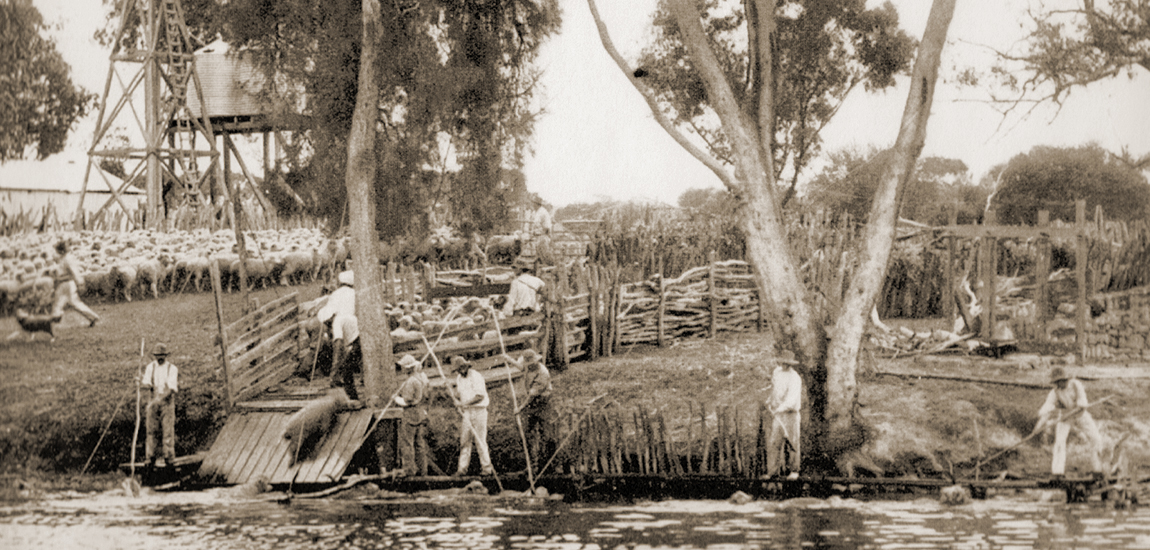
The history of Muresk Institute
We have a proud history dating back almost 100 years in Western Australia's agriculture industry.

We have a proud history dating back almost 100 years in Western Australia's agriculture industry.
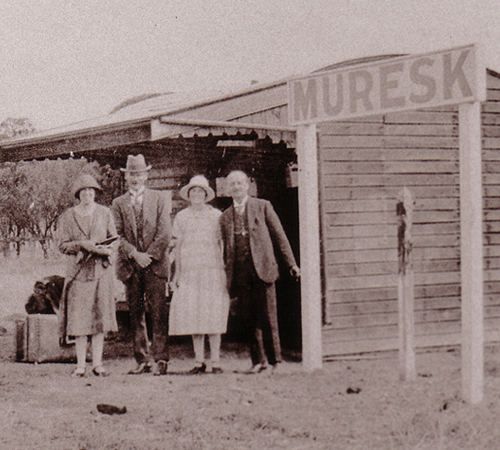
The Muresk farm was purchased by the State Government in 1925 for the sum of £14,000, starting a new chapter to the story of land settlement and utilisation that has its origins in the early years of the Swan River colony.
Almost 100 years later; Muresk Institute is now established as WA's skills hub for modern agriculture.
In partnership with WA's agriculture industry leaders and training providers; we continue expanding, innovating and growing to ensure that we are able to offer high quality industry-driven education, training and research opportunities to meet the demand for skilled workers in the agricultural sector.
Browse through our timeline below, to view some of our historical photos and read more about the history of Muresk.
Pictured: Early architectural drawings for the Muresk homestead.
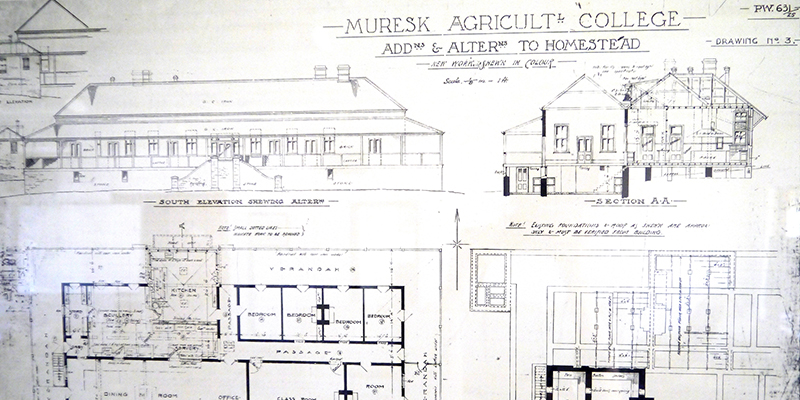
Much of the present land here at Muresk was included in a 4,400-acre grant made to Mr Henry Reveley in 1838. Portions of the grant were forfeited in the same year and taken up by Du Bois Agett, the property then being known as Down Farm.
It was acquired by founding farmer Mr Andrew Dempster in the late 1800s and renamed "Muresk" after his family's estate "Esk" in Scotland. The original homestead, which still stands on the property, was built by Mr Dempster in 1899.
Following the passing of Andrew Dempster in 1909; the farm was owned by his daughter Mrs E W Cotton who, together with her husband and family, resided at Muresk until its sale in 1925 when it was purchased for the sum of £14,000 by the Western Australian Government.
Muresk Agricultural College was established the following year, with the initial focus being animal husbandry.
The very first class commenced on 14 September 1926, with 16 students.
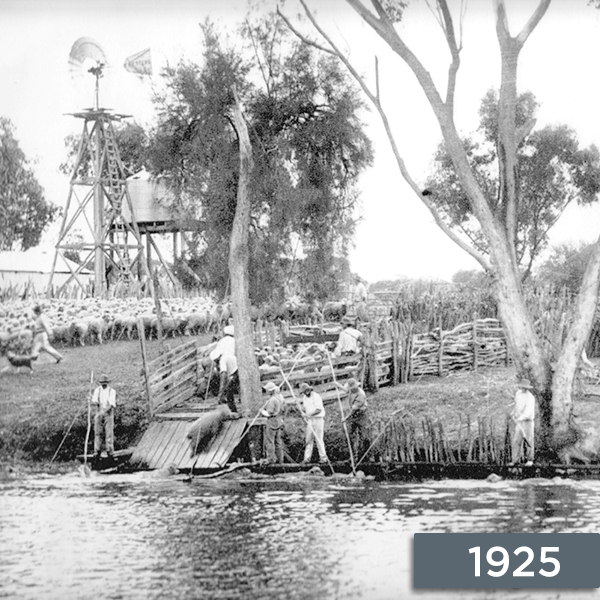
The steel and wooden swing bridge that crosses the Avon River on the Muresk property was built in 1926 by students at Muresk, as a replacement for the old bridge originally built during the Dempster era in 1892.
The rebuilding of the bridge was a huge effort involving many hours of manual labour to transport and lift the materials, without the modern equipment we have today.
The new bridge was constructed in four sections of 55 metres each, with two shorter end sections, and measures approximately 224 metres in total length. Anchored to a stump on the south side of the river, the bridge is supported by two large steel cables which rest on strong wooden supports at regular intervals.
The swing bridge was later restored in 1992 through the efforts of the Muresk Foundation, assisted by Curtin University and Muresk staff.
It is now heritage listed, as a key historical landmark on the property.
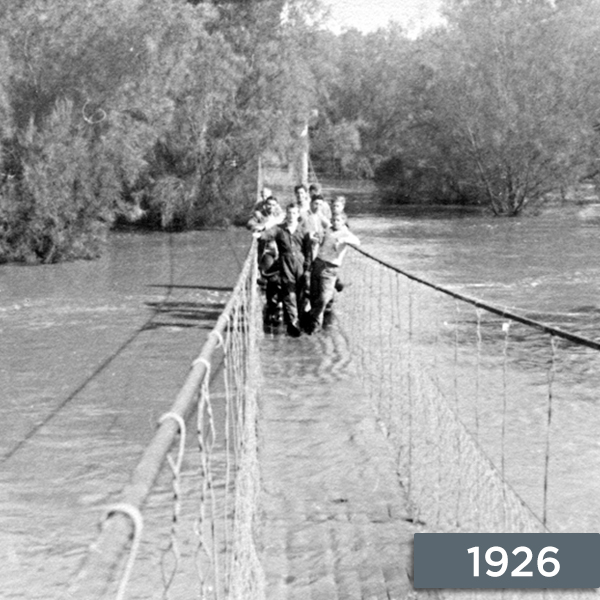
The first principal at Muresk — appointed in November of 1926 — was Mr Hugh Jason Hughes (pictured), previously an inspector of high schools.
Mr Hughes' appointment was published in the WA Government Gazette in 1927 (pictured).
Together with Mr A.B. Adams, who had a degree in agricultural science, they formed the teaching team.
Although WA was the last of Australia's mainland states to establish an agricultural college, Muresk was the first state-controlled agricultural college to concentrate on training farm managers at a time when the general trend in other regions was on training agricultural technologists.
Mr Hughes retired in September 1938.
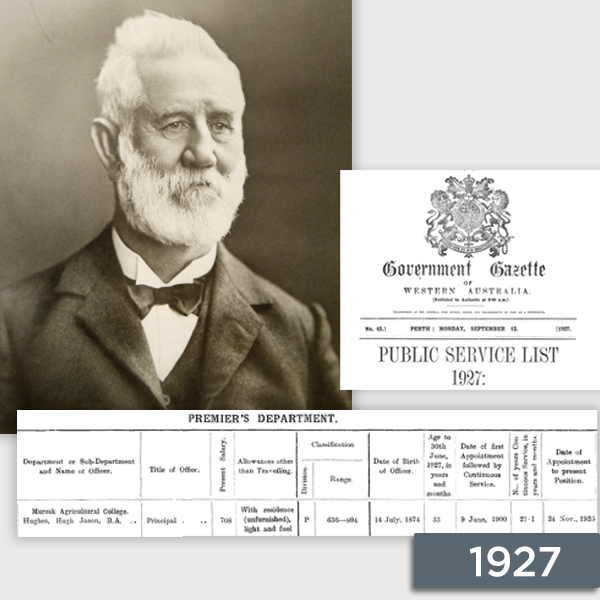
Under the Dairy Industry Act 1922; all methods and standards for all aspects of fair dealing between dairy farmers and factories were closely regulated to ensure that all products were wholesome and safe for consumers.
Muresk Institute delivered the training to accredit and certify milk and cream testers under the Act, which specified "All milk and cream supplied for sale by a dairyman to any dairy produce premises shall be sampled before that milk or cream is accepted by the dairy produce premises, and the sample shall be subsequently analysed and examined by approved methods by a person who has the qualifications of a milk and cream tester and holds a certificate to that effect.".
This first photo shows a group of agricultural students who were boarders on-campus at Muresk, posing proudly. The second photo is a group of dairy farmers in their "whites", with their trainer, studying to receive their Milk and Cream Testing Certification. These photographs are from 1935—36.
Mr William Southern was appointed as principal in 1938.
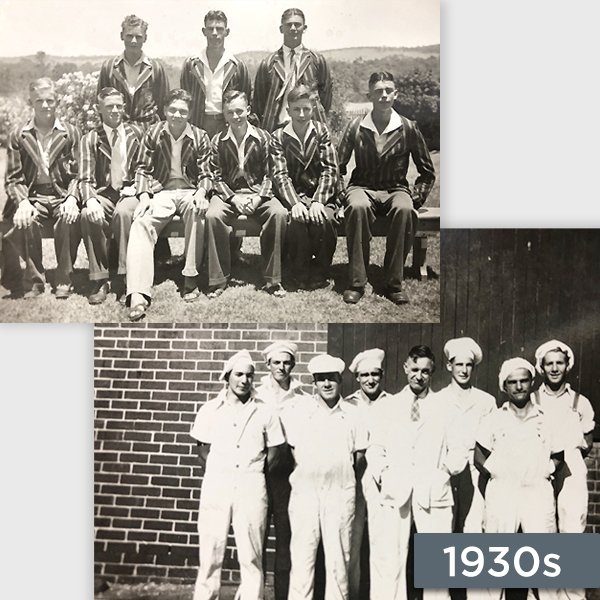
To meet the demand for dairy industry training, the Muresk dairy factory was set up to include separate manufacturing rooms for butter and cheese making.
The dairy was equipped with dairy machinery of the latest design for the times, and cold storage rooms for butter and cheese (before today's modern refrigeration equipment was available).
A large well equipped bacteriological laboratory was also incorporated, to enable testing of the dairy products as part of the training.
The factory was supplied with milk and cream from the farm's dairy herd. Students were accommodated in quarters within the factory.
The Milk and Cream Tester's Certificate pictured, issued by the WA Department of Agriculture and signed by the WA Superintendent of Dairying, was awarded in October 1935 to Mr Charles Dixon (also pictured).
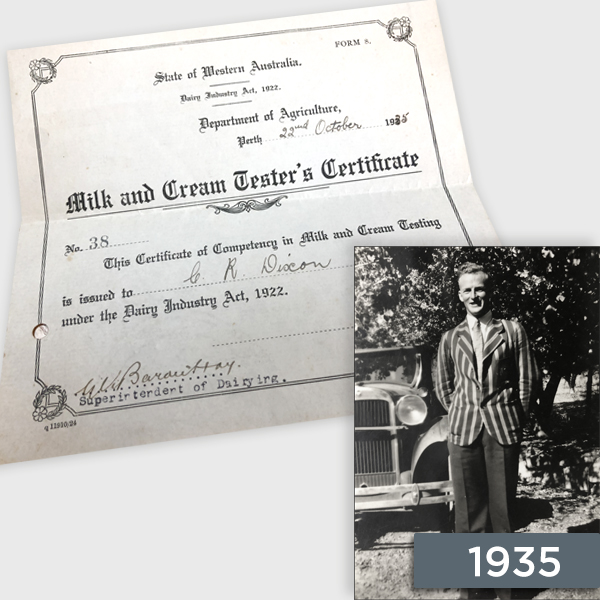
Muresk was closed for a short period from 1942 to 1945, due to World War II. Work continued on the farm itself through this time, with regular harvests to carry out and livestock to maintain.
Also during this period, WA was affected by severe drought and experienced some of its lowest rainfall and highest temperatures on record. The wheat industry was seriously affected by war production restrictions and a fertiliser shortage.
Muresk Agricultural College re-opened following the war, with our focus continuing on practical training in animal husbandries.
Muresk also responded to the demand for an increasing level of technology training, to meet the WA Department of Agriculture's need for skilled technical officers.
In 1947/48 the Commonwealth Government announced funding of $500,000 available for dairy industry improvement over five years, with $32,250 allocated to Western Australia.
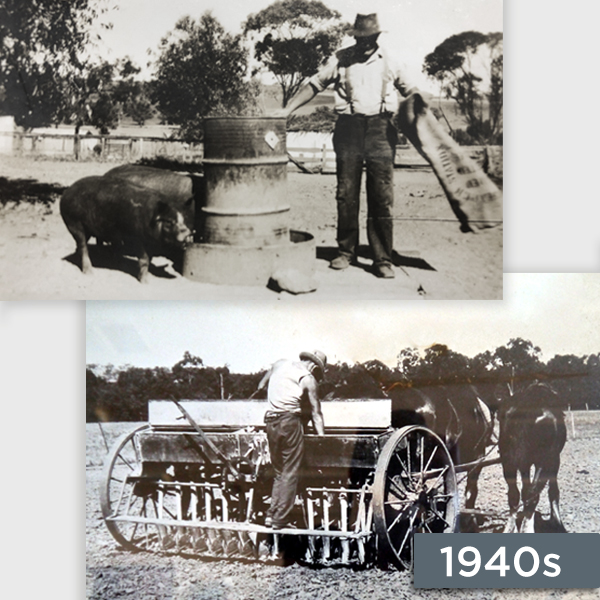
In the late 1940s, open days were hosted at Muresk.
These open days were very popular, with people travelling from across Western Australia lining up to see the farm and facilities.
This photo shows the crowd gathering for the Muresk open day in 1948.
Open days remained a tradition at Muresk for many years, leading to our move into hosting school visits and career days at Muresk where students from schools all over WA come to see the farm and learn about the training and career opportunities available in the agricultural industry.

A short course in dairy science — the Muresk Certificate of Competency in Dairy Manufacture — commenced in 1954, for butter and cheese factory workers. The cost of the course was £82; which included accommodation at Muresk.
There was also a three-year Diploma in Agriculture course available, which cost £80 per academic year. Students took part in all field operations on the farm and worked in the blacksmith and carpentry shops.
Short "winter courses" for farmers, which were offered at Muresk in pre-war years, recommenced in July 1953 and proved to be very popular as reported in the September 1953 WA Journal of Agriculture.
Two three-day courses were offered — one on sheep and wool and the other dealing with pig husbandry, with each course costing £2 including accommodation and catering.
Pictured: Winter course students, and a student outside the Hughes Hall dormitory building.
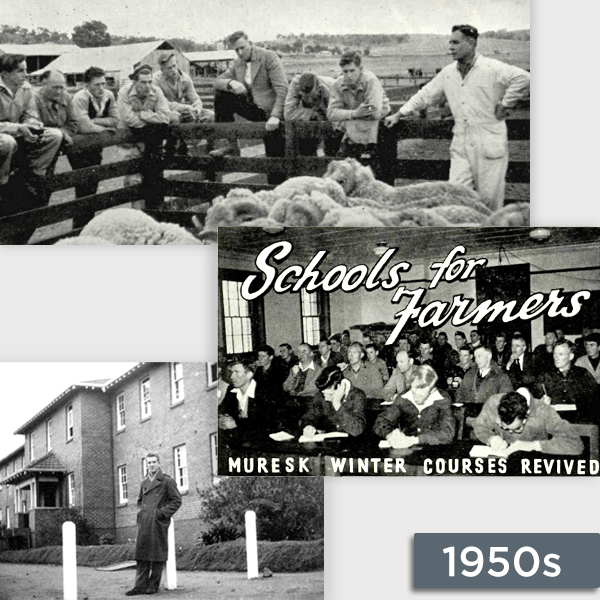
On 7 September 1952, a large gathering of past and present students and members of staff attended a ceremony at Muresk celebrating the opening of a gateway built in memory of Mr Hugh Jason Hughes, the first principal. The gateway was officially opened by his widow, who cut the ribbon (pictured).
Designed by Mr Marshall Clifton, the gateway has two pillars, each carrying an inscribed bronze tablet.
One tablet is inscribed "Hughes Memorial Gateway Erected to the Memory of Hugh Jason Hughes, Foundation Principal of Muresk Agricultural College 1926—1938.". The other reads "Muresk Agricultural College was opened on October 30th 1926 for the Extension of Agricultural Education to the People of Western Australia.".
Flanking the pillars are two wrought iron and metal-mesh wings carrying the Muresk name. Steel rails between them form a stock-proof run through.
The Hughes Memorial Gateway still stands proudly today at the entrance to Muresk Institute.
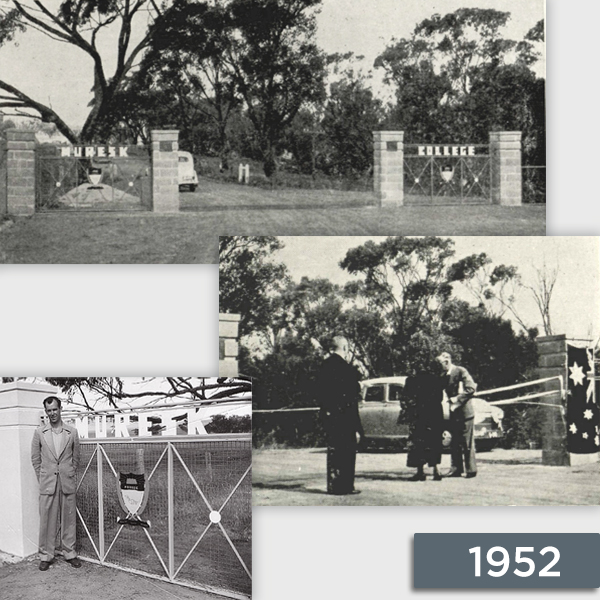
On the evening of 8 April 1954, the Northam Town Hall was packed to capacity when His Excellency the Governor of Western Australia Sir Charles Gairdner presented diplomas and prizes to successful Muresk students.
Also in attendance was the President of the WA Royal Agricultural Society, Mr Harry Higham.
The "Governor's Cup" was awarded to the principal of Muresk Agricultural College, Mr W Southern (pictured), for gaining the highest number of points in the livestock section at the 1953 Perth Royal Show.
This was our second win for this prestigious award; having been the highest points winner for dairy cattle in 1934.
Read the full article here on the WA State Library website.
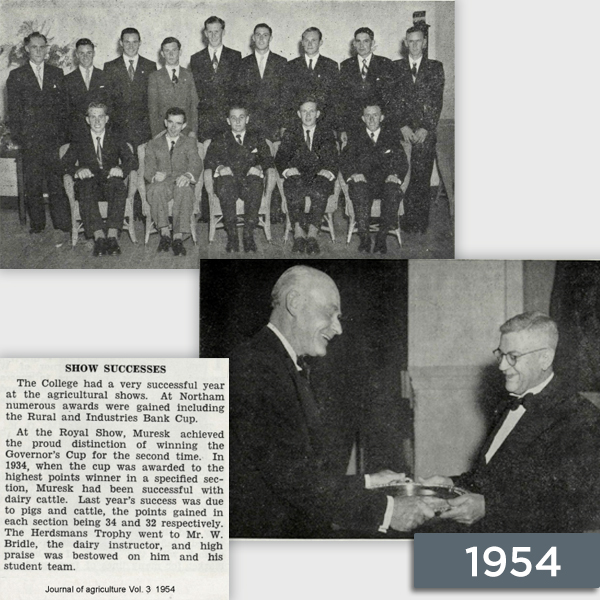
Through the 1960s, Muresk moved towards taking in students qualified for tertiary entry.
A notice for 1961 student admissions was published in the Journal of the WA Department of Agriculture Vol 11: 1969 (pictured), available here on the WA State Library's website.
While continuing to make a name for Muresk in the field of research, one of the major projects in this period was for methods of conserving crop material to use in mid or late summer in response to drought conditions.
The project was a partnership between Muresk, the Western Australian Institute of Technology (WAIT), and the WA Department of Agriculture.
The success of this research project led to improvements in crop management for WA farms.
Main picture: A notice for 1961 student admissions, in the Journal of the WA Department of Agriculture Vol 8: 1959.
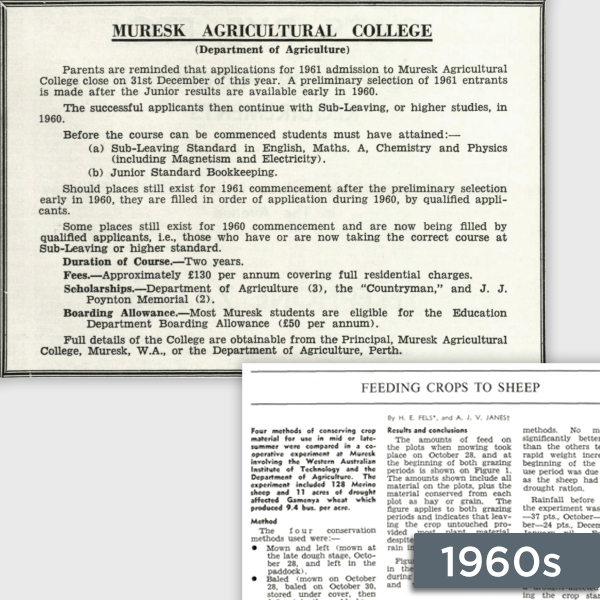
Mr Kevin Bartels was appointed as the third principal in 1966.
Mr Clyde Smith, a former CSIRO research scientist, was appointed as the fourth principal in 1969.
Seeing an urgent need for farm management education training and research in WA, Mr Smith started recruiting new teaching staff to meet this demand.
This initiative led the way forward for Muresk to expand further into specialised higher education and training for the agricultural industry.
In 1969 we became part of the Western Australian Institute of Technology (WAIT) — the first agricultural college in Australia to join a larger institution of higher education.
Muresk's award winning livestock, particularly our stud bulls, were in high demand as breeding stock.
Pictured: An advertisement in the Journal of the WA Department of Agriculture Number 8: 1967.
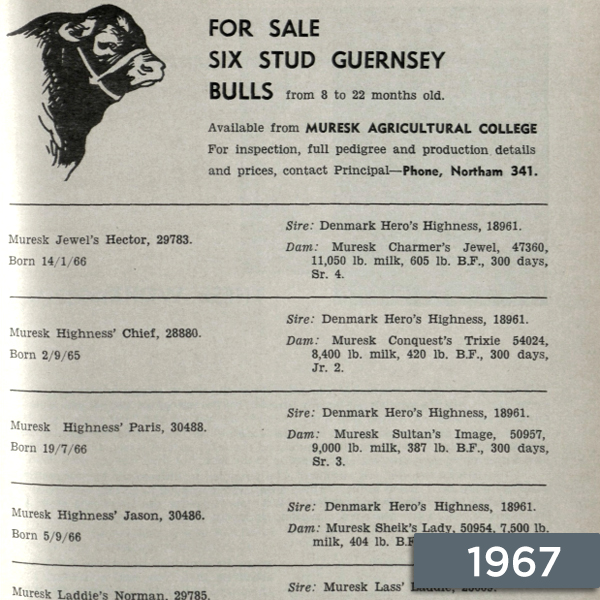
The 1970s was a decade of significant change for Muresk.
In 1970, a one-year farm practice course became mandatory prior to formal studies in agriculture.
Also in 1970, we offered a tertiary-orientated Associate Diploma in Agriculture with the focus on farm management supported by technology.
In 1971, we became the first agricultural college to admit female students.
Muresk's leadership in agricultural research continued to gain recognition, with many successful projects, including field trials focusing on weed and disease control, undertaken and published in the WA Journal of Agriculture.
Muresk also developed rural extension programs, with courses for bank managers dealing with rural industries and technology training for stock farmers, and established strong networks within the agricultural industry.
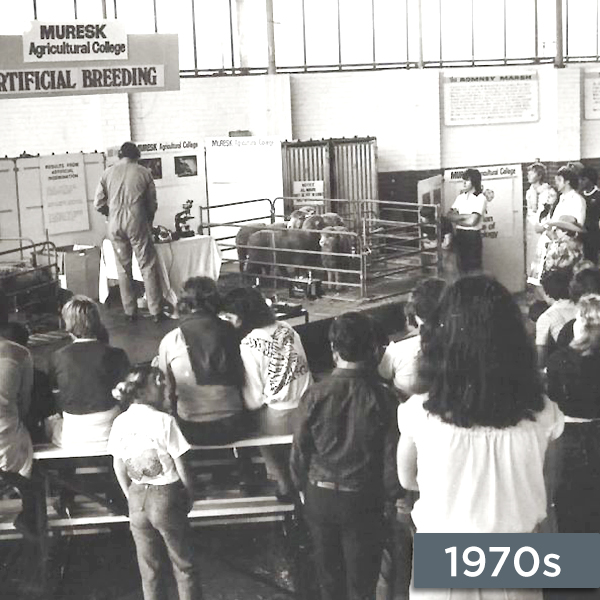
To celebrate Muresk's 50th anniversary in 1976, we hosted the International Sheep Breeding Congress in Perth which attracted delegates from all over the world.
We made another pioneering move in 1977 with the introduction of Australia's first undergraduate degree in agribusiness, a three and a half-year Bachelor of Business (Agriculture) which included a semester of industry experience.
A horse management stream was introduced within the Associate Diploma — the first of its kind in Australia. This established Muresk as a leader in agricultural training.
Pictured: A footy game on the Muresk oval.
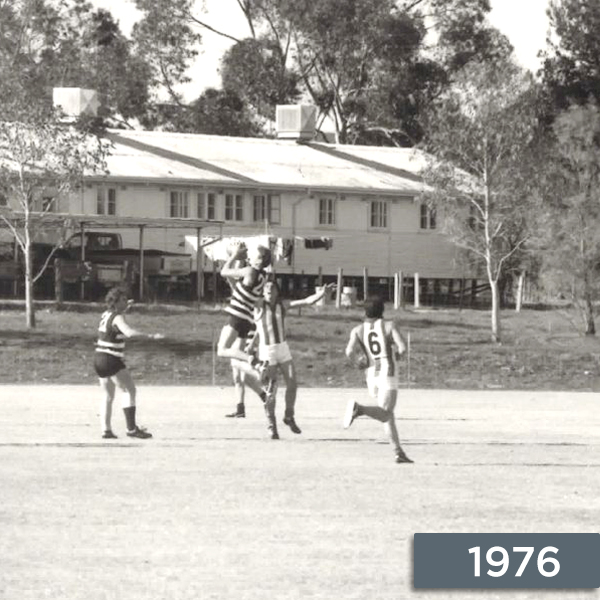
Muresk continued to grow and innovate through the 1980s, with the first two students enrolled in our new Bachelor of Arts (Rural Journalism) in 1981.
The course was run in conjunction with the Western Australian Institute of Technology's (WAIT) School of Communication and Cultural Studies, on WAIT’s Bentley campus.
By 1983 enrolments had increased to 15, with students from all over Australia.
Muresk continued developing its research capabilities and collaborations with industry through the 1980s, with a particular focus on grain, wheat and barley agronomy as well as weed and disease control.
Work also continued on expanding accommodation and facilities on the property, to enable Muresk to attract more students.
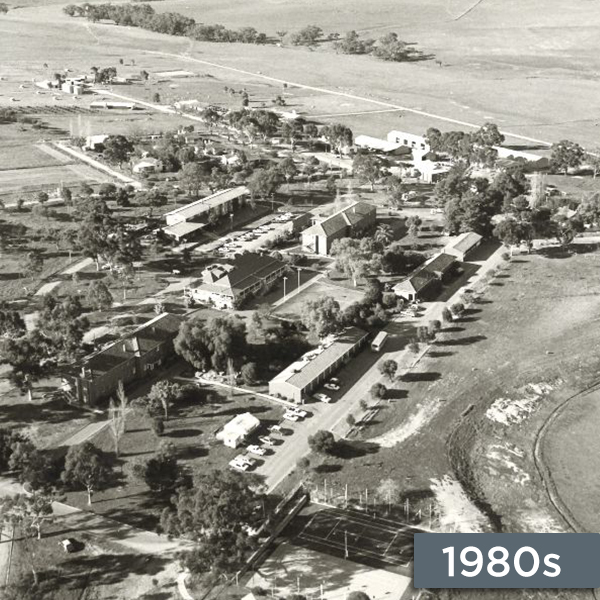
In 1985, Muresk became more autonomous within the Western Australian Institute of Technology (WAIT), and our name was changed to the Muresk Institute of Agriculture.
Dr Ian Fairnie was appointed as the inaugural director, and established a five-year strategic plan for concentrating on serving the rural community of WA.
Dr Fairnie focused on strategies to enable Muresk to take the lead in the establishment and provision of a range of post-secondary education programs and increase awareness in the rural community to the benefits of better farm management.
In 1986, a new Bachelor of Business (Horticulture) was offered as a response to the need for production, management and marketing education.
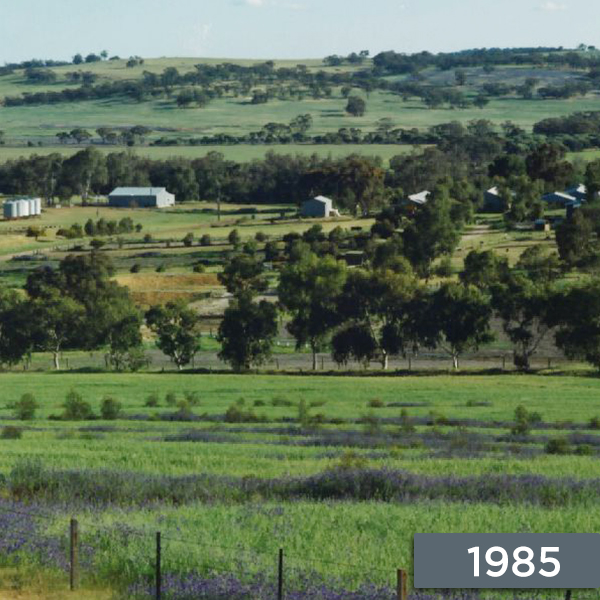
In 1986, the Farm Management Foundation of Australia relocated to the Muresk campus as part of a revamp that saw the creation of the Muresk Extension Service, a joint initiative between Muresk and TAFE.
We began offering short courses to the rural industries of Western Australia in response to the need for production, management and marketing education specific to the horticultural industry.
That same year, Muresk hosted the First National Agribusiness Conference in Canberra.
On 1 January 1987, the Western Australian Institute of Technology (WAIT) became Curtin University of Technology, and Muresk had another new parent body. Our relationship with Curtin remains strong to this day.
Pictured: A graduation ceremony at Muresk.
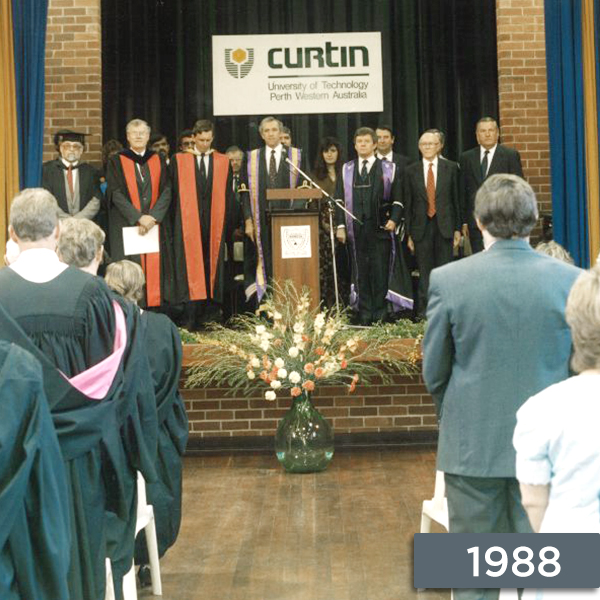
In 1990, Bulletin magazine named Muresk as Australia’s best tertiary education in agriculture.
Professor Murray Hawkins of Alberta, Canada, was appointed as the second director.
In 1994 we expanded our course offerings with Curtin University to include a post Graduate Diploma in Landcare, a Graduate Diploma in Agribusiness, a four-year Bachelor of Agriculture and a Bachelor of Horticulture.
A two-year Associate Diploma in Viticulture and Bachelor of Science (Aquaculture and Seafood Science) came in 1997, followed in 1999 by a Bachelor of Science (Viticulture and Oenology).
The 1990s saw a significant increase in students attending Muresk, as we continued to establish the Institute as a leader in higher education for the agricultural industry.
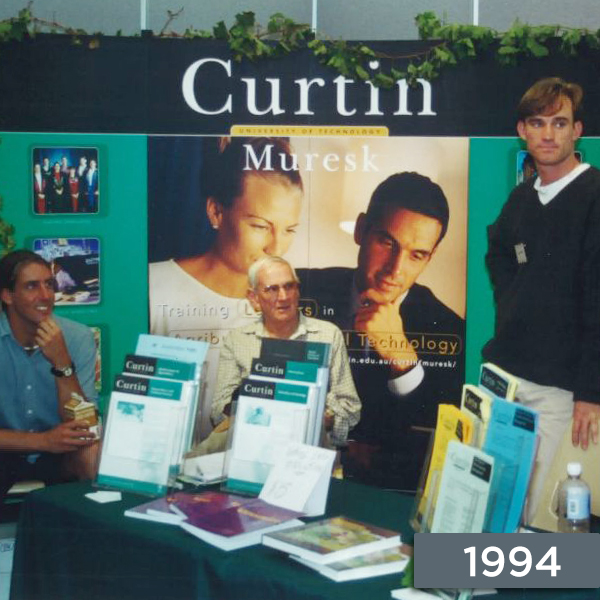
In 1995, Professor Murray McGregor, formerly of the Scottish Agricultural College, was appointed as the third director of Muresk Institute of Agriculture.
Prof McGregor promoted greater links with the agribusiness sector and championed our leadership and further progress in the areas of research and postgraduate studies.
Also in 1995, Muresk hosted the first postgraduate research students at Masters and PhD level.
Many students stayed on-site at Muresk, in the historic Hughes Hall (pictured).
The building was named in honour of our first principal Mr Hugh Jason Hughes, who was appointed in 1926, and is now heritage listed.
Hughes Hall has been renovated and carefully maintained over the years, and still accommodates students at Muresk to this day.
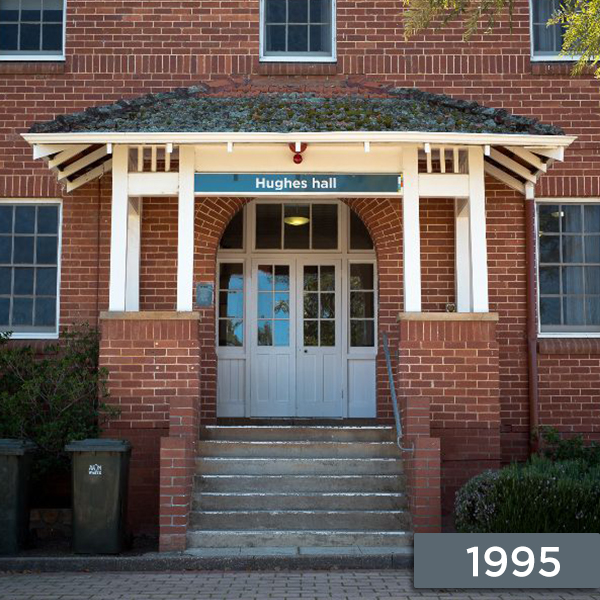
In 2001; a new two-year Associate Degree in Agribusiness; a three-year Bachelor of Agribusiness with majors in aquaculture, aquatic resources, farm management, horticultural management and agribusiness marketing was offered.
Options for a fourth-year honours program or a professional graduate year were also introduced.
Development began on our first double degree in partnership with Curtin University’s School of Public Health – a four-year Bachelor of Agribusiness (Marketing), and Bachelor of Science (Food Technology).
Professor McGregor stepped down from his position as director, with Associate Professor John Janes appointed director in January 2002.
Our agricultural research projects continued, with a particular focus on crop management and farming systems.
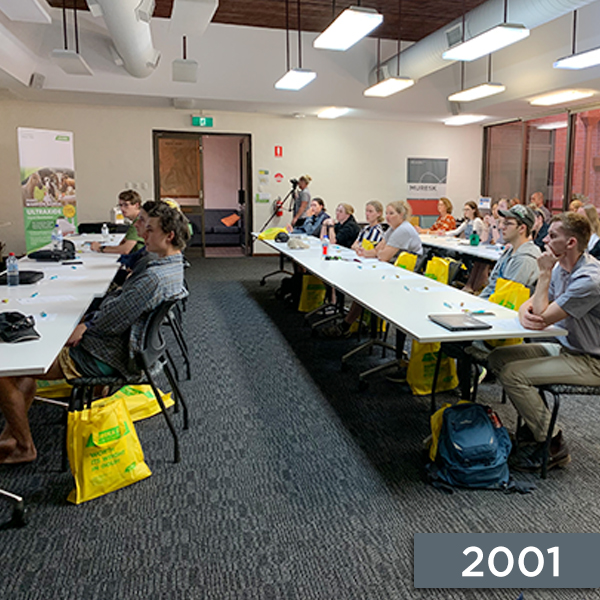
In 2003, we changed from Muresk Institute of Agriculture to Muresk Institute.
Together with Curtin University, we were a major sponsor of the International Farm Management Congress and selected to host the International Society of Horticultural Science on Horticultural Education, Training and Extension in 2004.
Curtin and Muresk, with the WA Department of Agriculture, hosted the 22nd ASEAN/4th APEC Post Harvest Seminar in 2005.
These significant events recognised our leadership in the agricultural industry.
Professor Graeme Robertson was appointed director of Muresk Institute on 1 March 2004.
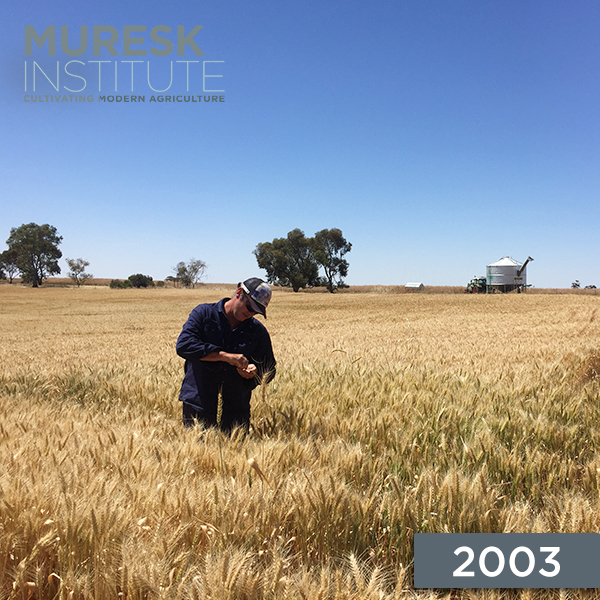
2012 marked a major change for Muresk, when responsibility for our operation was transferred from Curtin University to the Western Australian Government.
Under the new management of the WA Department of Training and Workforce Development, Muresk Institute was established as a multi-tenanted, multi-functional facility for training, higher education, research, professional development and learning extension.
Our course offerings expanded into vocational education and training (VET), opening further opportunities for more students seeking agricultural training.
We also worked closely with WA schools to host farm visits, agricultural career days and other events at Muresk; and continued holding our popular open days.
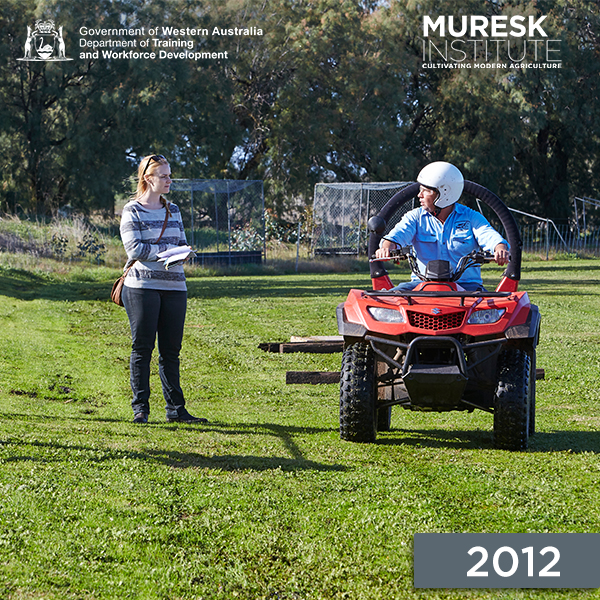
In 2014, we commenced delivery of the Bachelor of Agricultural Business Management. We reached a major milestone in 2015 with the delivery of training to 1,000 students, and work continued on upgrading the facilities and equipment at Muresk to meet the increasing demand for our training and services.
Our first Dog vs Drone competition was held in 2017 (pictured), showcasing agricultural technology to WA school students. The competition pitched working sheep dogs against drones and was hugely popular. We continued to host this exciting event over several years, engaging hundreds of students with farm technology and career opportunities in the agricultural industry.
A new Royalties for Regions funding initiative was initiated by the WA Government in 2018, with funding made available for new programs and facilities at Muresk. This funding included $2.3 million for the development of a new Skills Development Pathway training program focusing on skills for careers in agriculture.
The farm remained as busy as ever, with our expanding family of livestock and regular successful harvests.
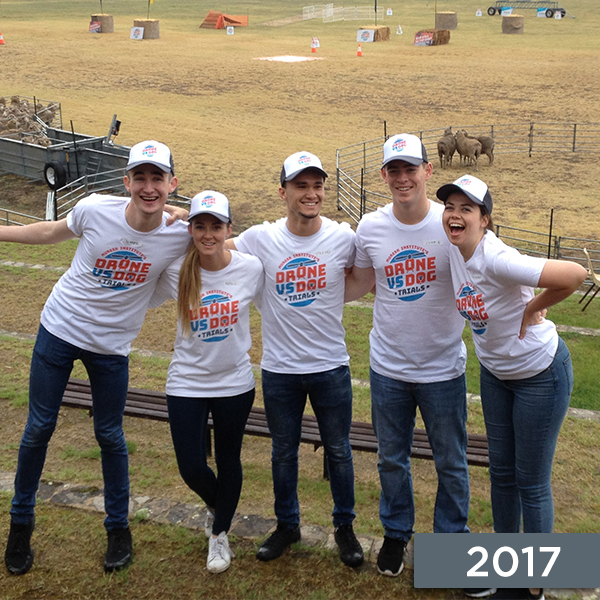
In 2022, we replaced our previous 40-year-old shearing shed with a brand new shearing shed facility that now offers a fantastic space for shearing, wool classing and roustabout training.
Equipped with state-of-the-art tools and equipment, the facility was funded through an $800,000 investment by the State Government as part of its Wheatbelt Recovery Plan and the Rebuilding our TAFEs package.
Our new $9.5 million specialist Agriculture Machinery Training Centre (AMTC) was officially opened in 2023 by Premier Roger Cook and Training Minister Simone McGurk, marking a new era of training at Muresk.
The AMTC is the centrepiece of a $10.3 million expansion program for Muresk, supported by the WA State Government.
Pictured: Agricultural machinery in the new AMTC.
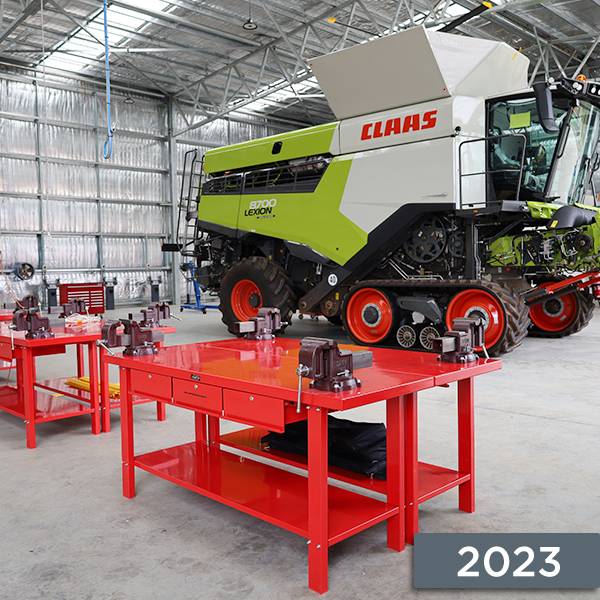
Acknowledgements
We wish to thank the family of Charles Richard Dixon, who generously donated some of the early historical photographs used here.
Information and photographs for the history of Muresk were compiled from our own archives, heritage records from the Shire of Northam, online archives from the National Library's TROVE website, the WA State Library and WA Government Gazette records, the WA Department of Primary Industries and Regional Development (DPIRD) digital library, and information from the Muresk Old Collegians Association (MOCA).